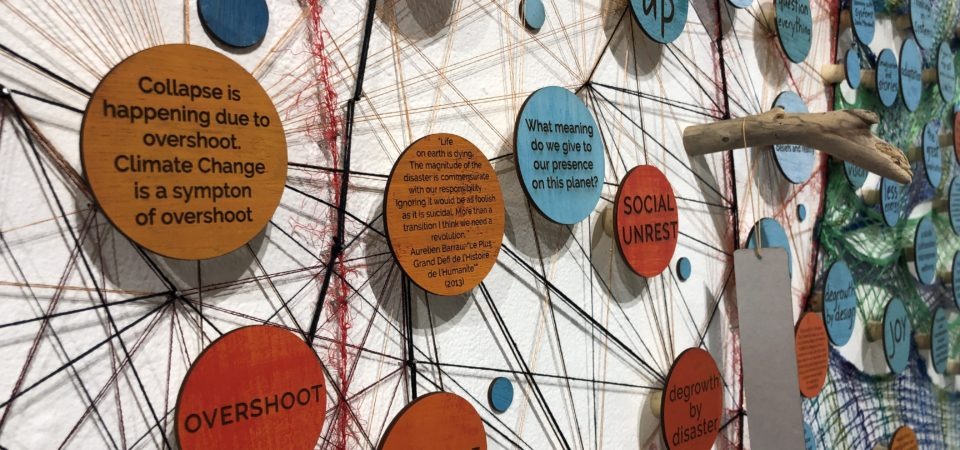Down to Earth
Participatory installation
Part of the exhibition ‘Terra Art Collective: Ecolibrium’
Gallery Route One, Point Reyes, CA,
August 27 – October 2nd, 2022.
(All photos ©Michele Guieu 2022 )
Down to Earth, my recent participatory installation at Gallery Route One in Point Reyes, is an attempt to represent the complexity of our predicament and the possible responses we can bring to have a livable future.
This installation is a tribute to the visionary Limits to Growth, published in 1972 and written by scientists at MIT, including Dennis Meadows and Donella Meadows.
The title, Down to Earth, refers to Donella Meadows’s last public talk in 1994 in San Jose, Costa Rica. She says: “We need to rediscover our ability to envision, to see goals, to make the idea of a sustainable world a living picture in our mind and in other people’s mind so that we know what we are talking about and where we are going.” The title also refers to the French philosopher, anthropologist, and sociologist Bruno Latour’s essay Down to Earth, Politics in the New Climatic Regime, published in 2017.
This year is the Limits to Growth’s 50th anniversary. Limits to Growth, a groundbreaking book –but vastly ignored by governments, warned the world about the impossibility of perpetual growth on a finite planet. For at least 50 years, we have known that there is no infinite growth on a finite planet. And yet, business as usual prevails.
This installation quotes many people’s work, including Dennis Meadows and Donella Meadows, Aurelien Barrau, Noam Chomsky, Extinction Rebellion, Jared Diamond, Paul Ehrlich, Julien Devaureix, Nate Hagens, Richard Heinberg, Jason Hickel, Jean-Marc Jancovici, Steve Keen, Arthur Keller, Corinne Morel Darleux, Pablo Servigne, Joseph Tainter.
These people have informed and inspired me every day since I started realizing the severity and complexity of our situation. They have in common that they are system thinkers. They envision the predicament with a bird’s eye view, which is fascinating -and essential- if we want a chance to bring the correct responses.
I spend time listening to them or reading their books. I only watch lengthy interviews, not quick debates. It takes time to start understanding. It is a long journey, and for me, the most enlightening one at this pivotal time.
Since I first read “How Everything can Collapse” by Pablo Servigne and Raphael Stevens in 2018, it has been a scary but fascinating journey about understanding our predicament: an entanglement of existential threats unfolding worldwide through an ecology, economy, energy, and equity poly-crises. The most dominant civilization is taking life on Earth to a precipice, exposing the complexity and fragility of our globalized world. The existential threats stem from an economic system based on perpetual growth, extraction of resources, and exploitation of people and land, the growing inequality gap, our belief systems, and our catastrophic disconnection from the natural world. Using a powerful and cheap fuel –oil, humanity exploded in size and complexity in a very short period, creating the conditions to destabilize the climate. A climate that was stable for the last 10.000 years and allowed humanity to become agricultural and flourish.
Being scared pushes me into action. I want to contribute to spreading awareness and telling the truth. I am thinking a lot about my two boys. It is unbelievable to be alive at this time when we see so many shifts happening. We need change. Nothing is more critical now than understanding what is at stake to make the right decisions. That is why I am working at MAHB and created the What’s Next for Earth project. The colossal efforts we need to make are top to bottom and bottom-up. I see a lot of beautiful projects coming from so many communities around the world. On the other hand, governments and elites are talking, but their actions are deceiving. How could they change a system that they mostly beneficiate from?
An overview of the installation at Gallery Route One.
The large-scale installation is almost equally divided into two parts that meet in the middle. On the left are geometric figures created by a myriad of nails on the wall connected by red and black industrial thread. On the right part, long pieces of blue and green fishnet yarn are nailed to the wall with some space between the wall and the yarn to create a flowing effect.
Over two hundred small blue or red round wooden tags are fixed on the wall with small corks and nails throughout the installation. Words or sentences are lasered on each tag.
Throughout the installation, small pieces of driftwood stick out of the wall. They support the tags on which people are invited to write their thoughts and ideas or to draw.
The red tags list some of the things we are up against at a time when we need a rapid, profound societal change to slow down the unfolding catastrophe: the energy crisis, the unfolding food crisis, the worsening inequalities, the rapid biodiversity loss, the acceleration of climate instability, the loss of democracy cohesion.
The blue tags address the responses: understanding what is at stake, slowing down, thinking in systems, building resilience, imagining a world with less energy, connecting to nature, telling the truth, and embracing uncertainty.
On the right of the installation, a box containing pencils, erasers, and cardboard tags is displayed on the wall for people to participate.
Details of the installation
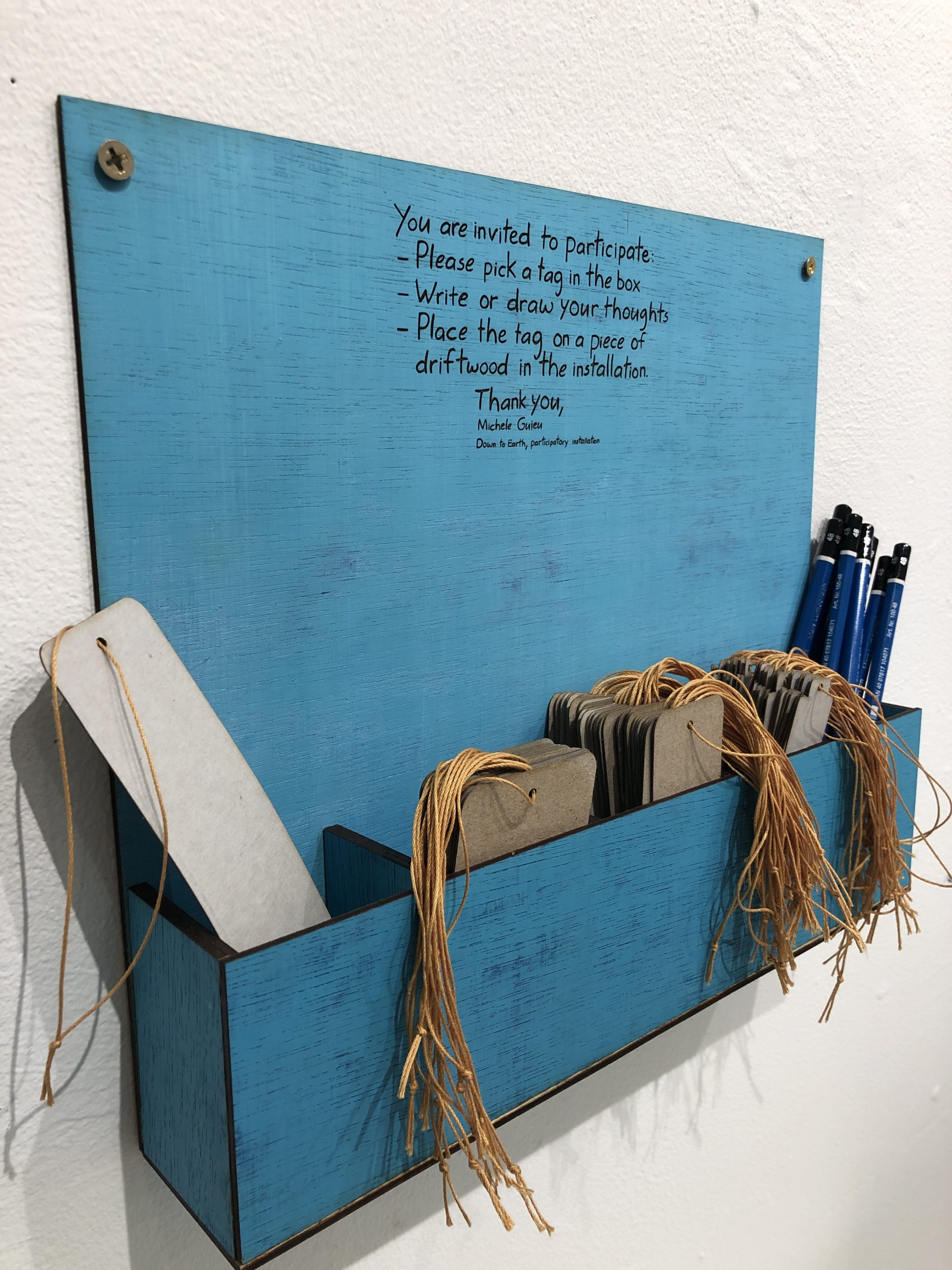
The Installation Process
Site-specific installations are always an exciting journey for me. I immerse myself in the process, going with the flow and embracing uncertainty. I am very grateful I could do a partial mock-up of the installation on Christina Conklin’s studio wall. I did not want to map the installation too precisely and what I did in the gallery looks different.
I knew what I would do, but not the exact number of circles, the number of pieces of yarn, their precise length, or the placement of all the tags and the driftwood pieces. There was some flexibility in the process that I liked. Making the site-specific installation was part of the creation of the work. It will not be the same next time I’ll install it. I installed the elements for four days, working around 8 hours daily.
I started with the geometric figures, primarily circles, on the left part of the installation, using small nails and industrial thread. Then I worked on the right part, adding the yarn pieces with small nails. I added all the blue and red wooden tags throughout the installation and the small pieces of driftwood last.
Time lapses give a good understanding of the process steps but offer a distorted sense of time. The slow pace was essential to the process of this installation.
Timelapse of the installation process at Gallery Route One.
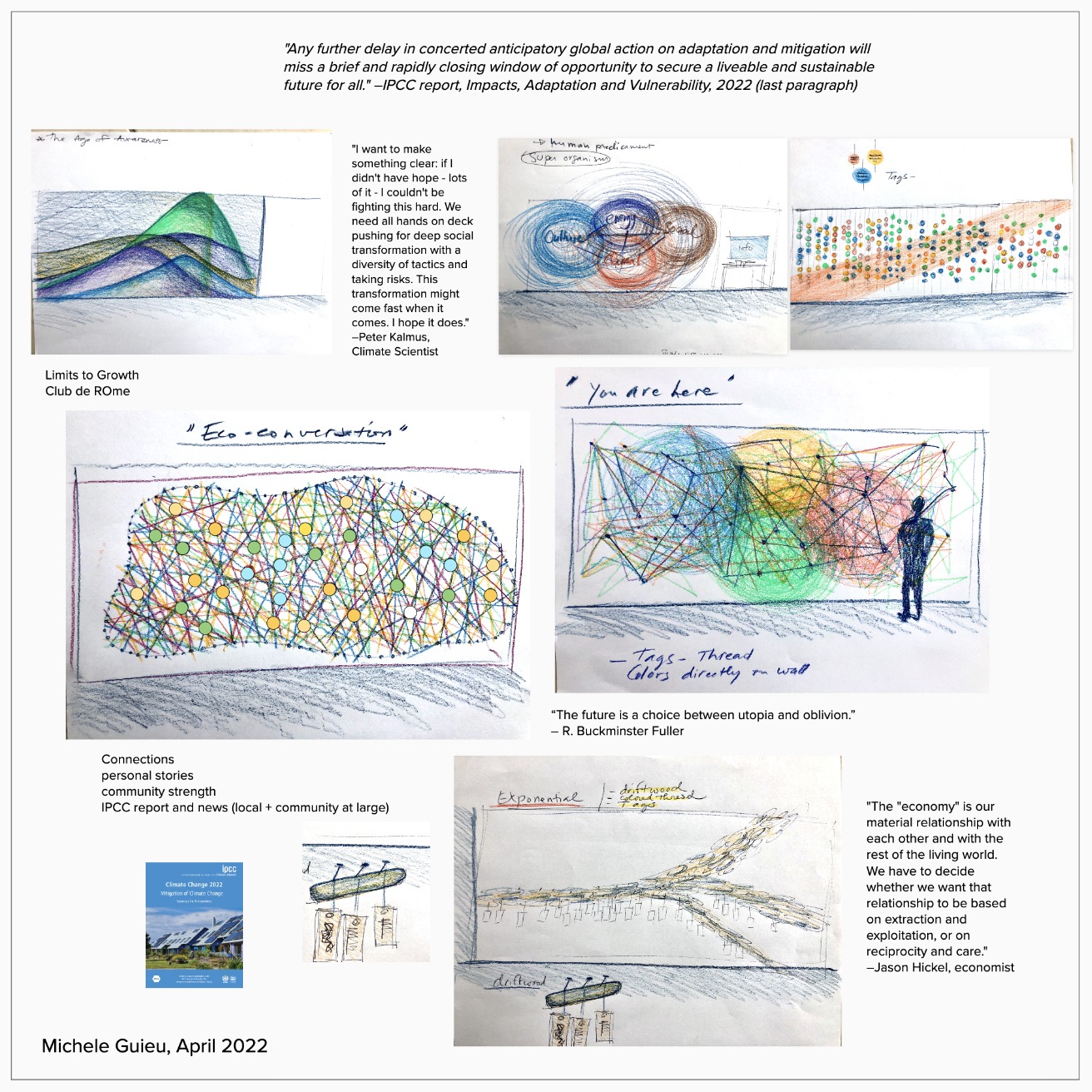
Preparatory sketches
Installation mockup.
Participation of the Public
I have created many participatory installations. This installation proposes to the community to review some critical points of our predicament and share visions and ideas for the future. Participants are invited to pick a tag in the box, add their thoughts, and place the tag on one of the driftwood pieces. During the exhibition at Galery Route One in Point Reyes, 265 people participated.
Here’s one tag: “Robin Wall Kimmerer speaks of seeing with two eyes. Scientific + indigenous wisdom eyes. Something to slow our harm may emerge if we open our eyes. She also speaks of reciprocal responsibility to all life and the possibility of restorative justice between our species and all others, plus the Earth itself. It’s time.”
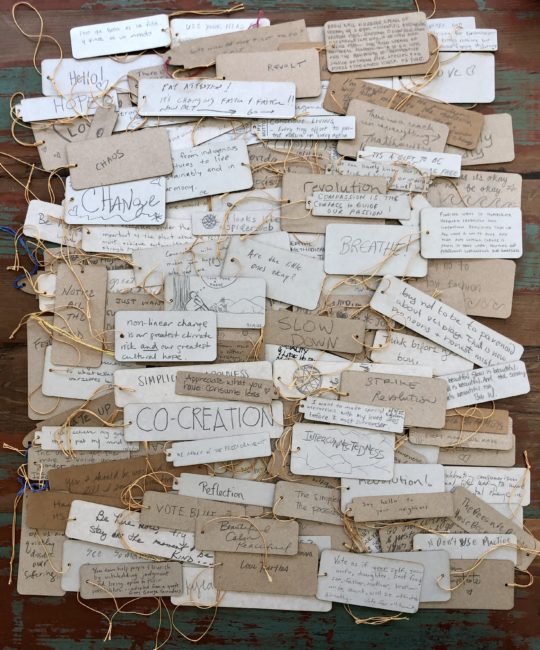
Materials
In my art practice, I focus on using as few materials as possible. Most of my work is created with second-hand material, and ephemeral. The wood, yarn, and industrial thread I used in this installation are all reclaimed and coming from RAFT, a warehouse in San Jose where educators can find many items donated by companies located in the Silicon Valley area. The other materials are nails and small corks. In the installation, there are also a few pieces of driftwood that I picked up on the beach close to where I live. I used recycled cardboard packaging boxes for the tags.
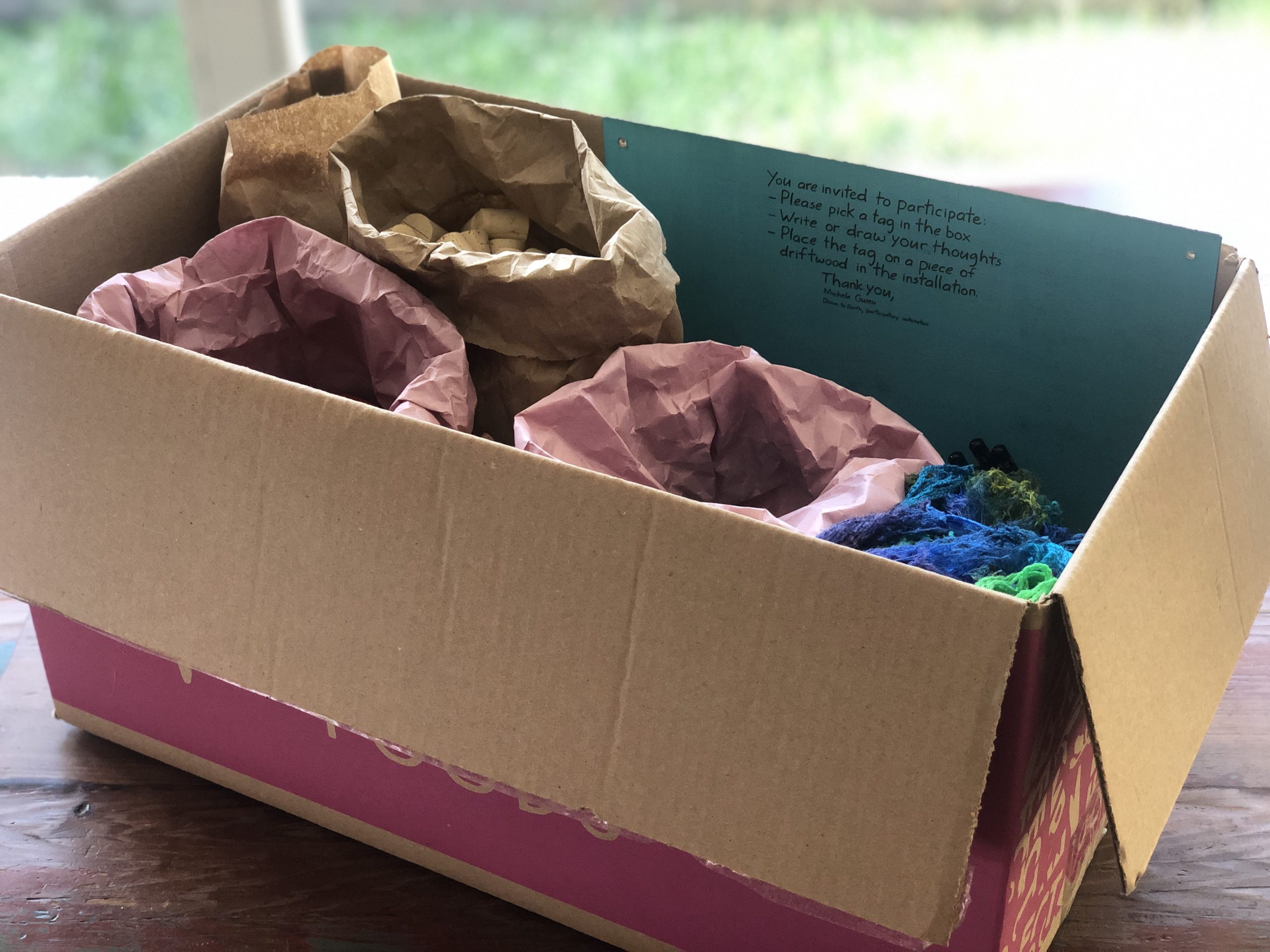
All the installation elements (wooden tags, cardboard tags, yarn, nails, corks, and the participation box) fit in a small box.
Through a display that is on itself a reflection on materials, the participatory installation Down to Earth invites the public to dive into the complexity of our situation and to reflect on possible responses. Nothing is more important now before it is too late, than to think about changing the extractive and exploitative system, destroying its lifeline for profit.
We are at a crossroads. This time is code red for humanity and the biosphere. Now is the time to shift the paradigm and re-envision the human enterprise; as a part of the biosphere, not detached from it or above it.
Going back down to Earth is an urgent necessity if we want a chance at keeping a livable planet.
It is about reconnecting to reality.
It is about telling the truth about our situation.
It is about understanding the connections.
And then – imagining responses.
An iteration of this installation will be part of an upcoming exhibition in the Bay Area in February 2023.
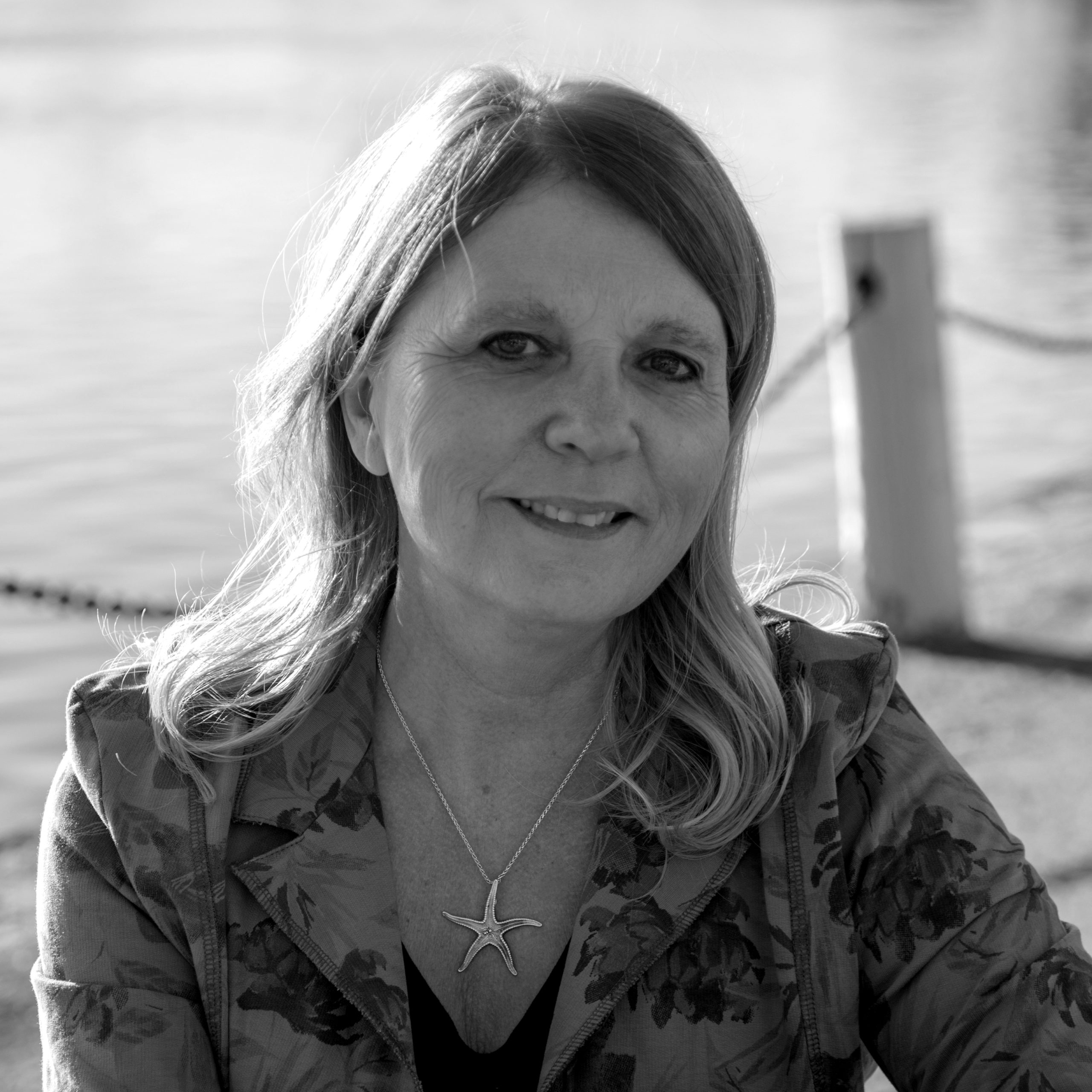 Michele Guieu is an interdisciplinary artist and teaching artist living in the Bay Area, California. She is the Art director at the MAHB, and the founder of What’s Next for Earth, an ongoing art project supported by the MAHB and Post Carbon Institute. Michele co-hosts with artist and author Christina Conklin the Artists and Creative group on the Deep Transformation Network.
Michele Guieu is an interdisciplinary artist and teaching artist living in the Bay Area, California. She is the Art director at the MAHB, and the founder of What’s Next for Earth, an ongoing art project supported by the MAHB and Post Carbon Institute. Michele co-hosts with artist and author Christina Conklin the Artists and Creative group on the Deep Transformation Network.
Michele’s website.

